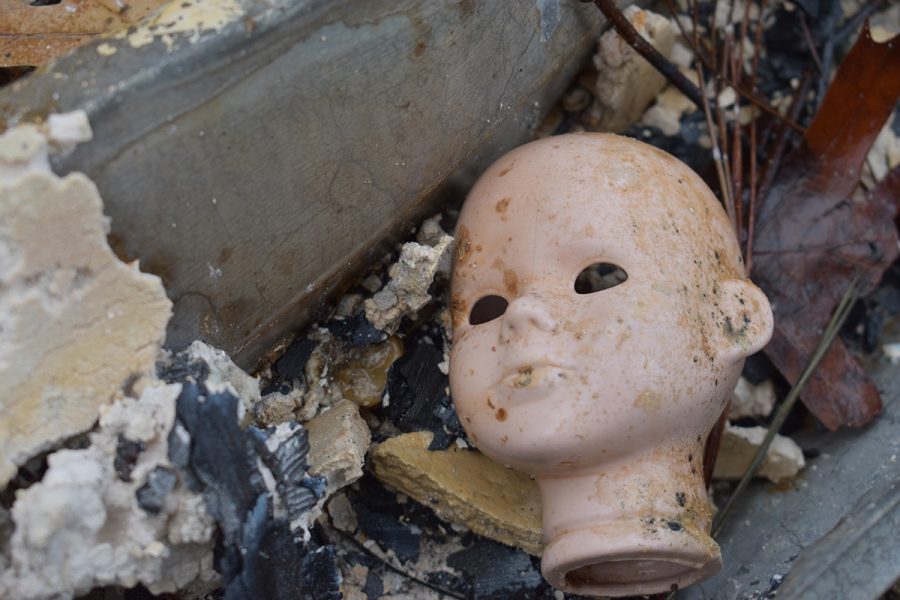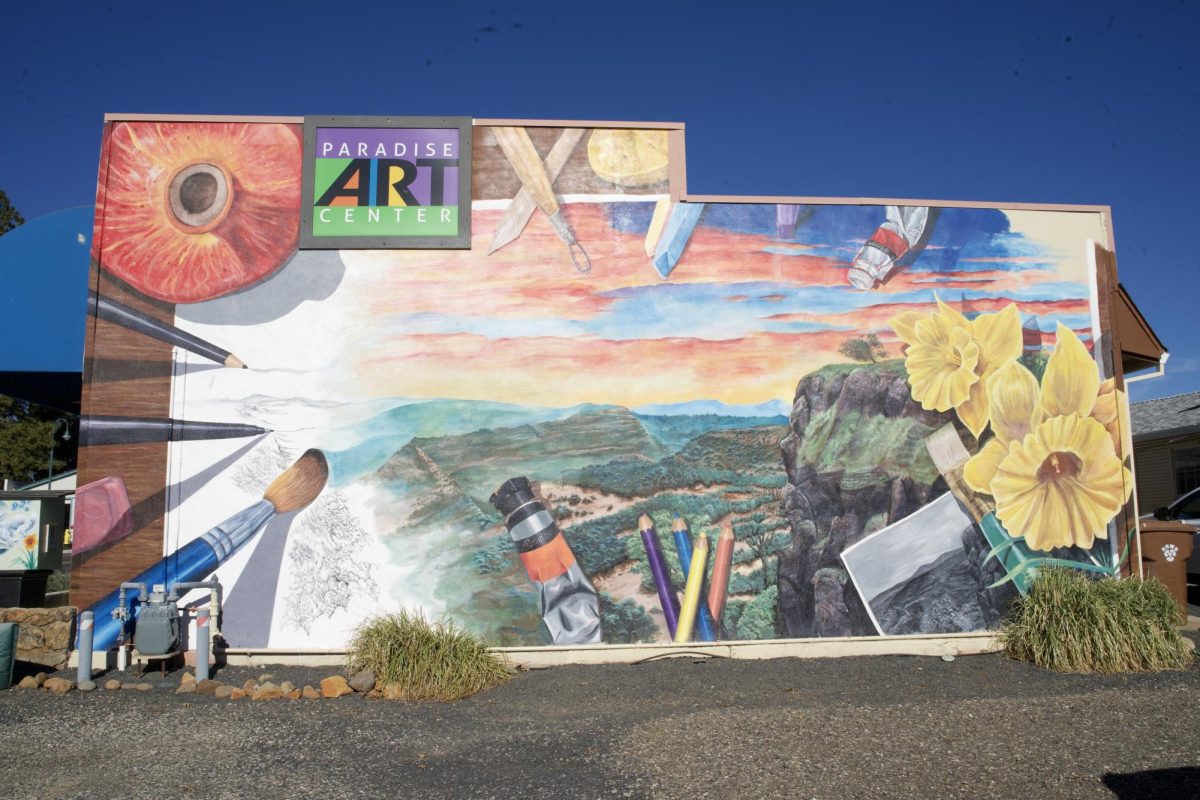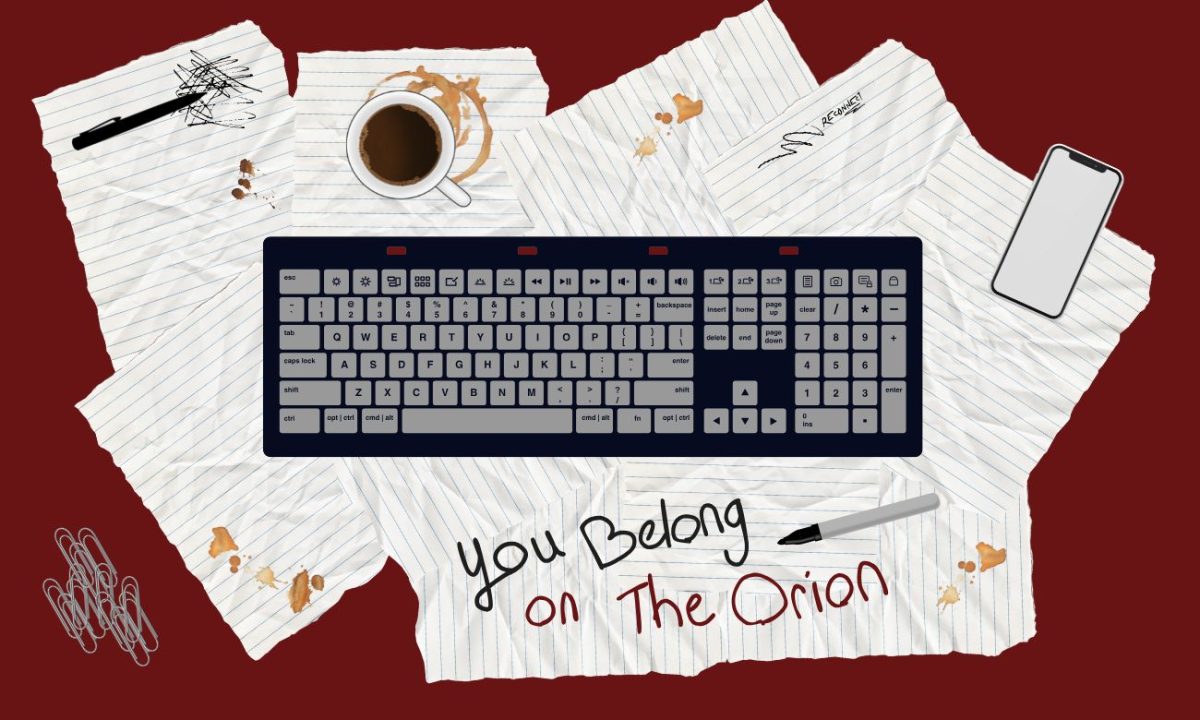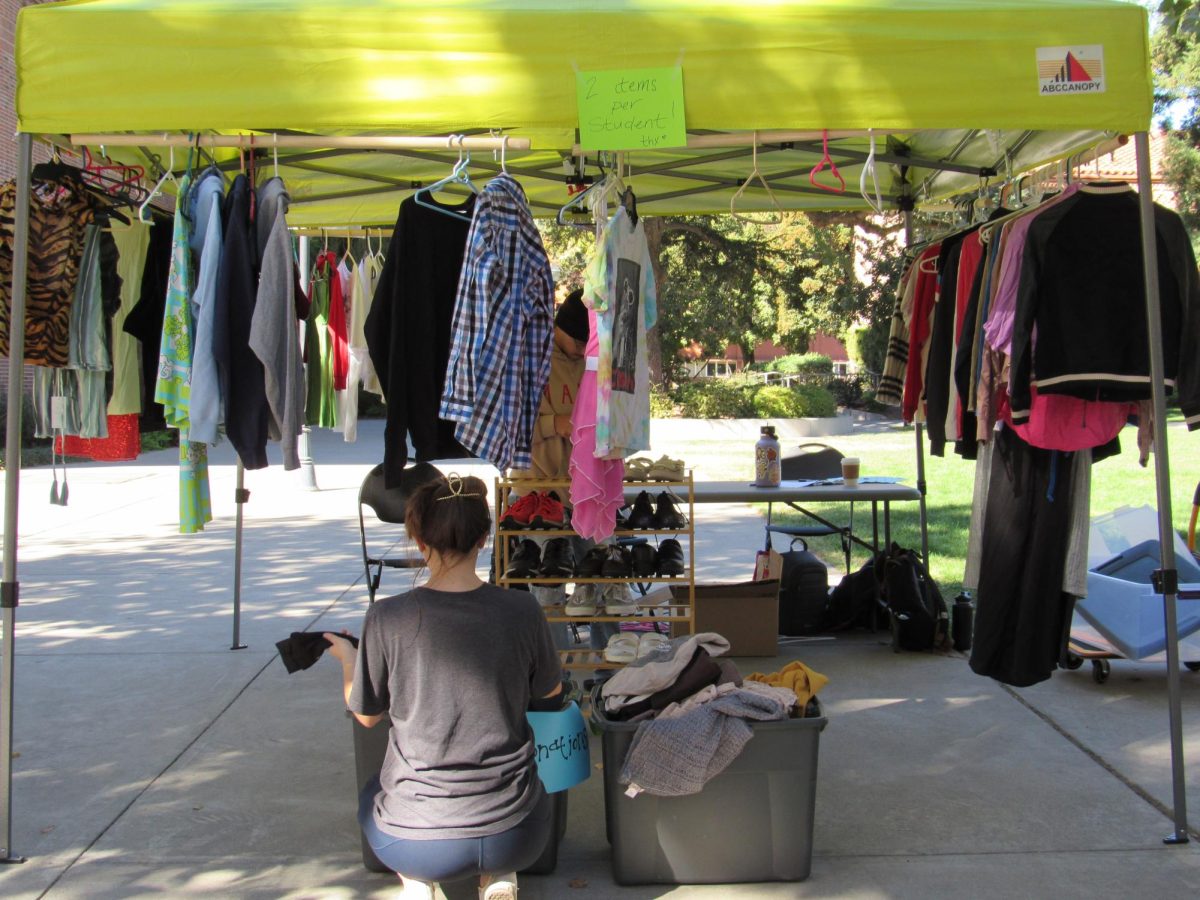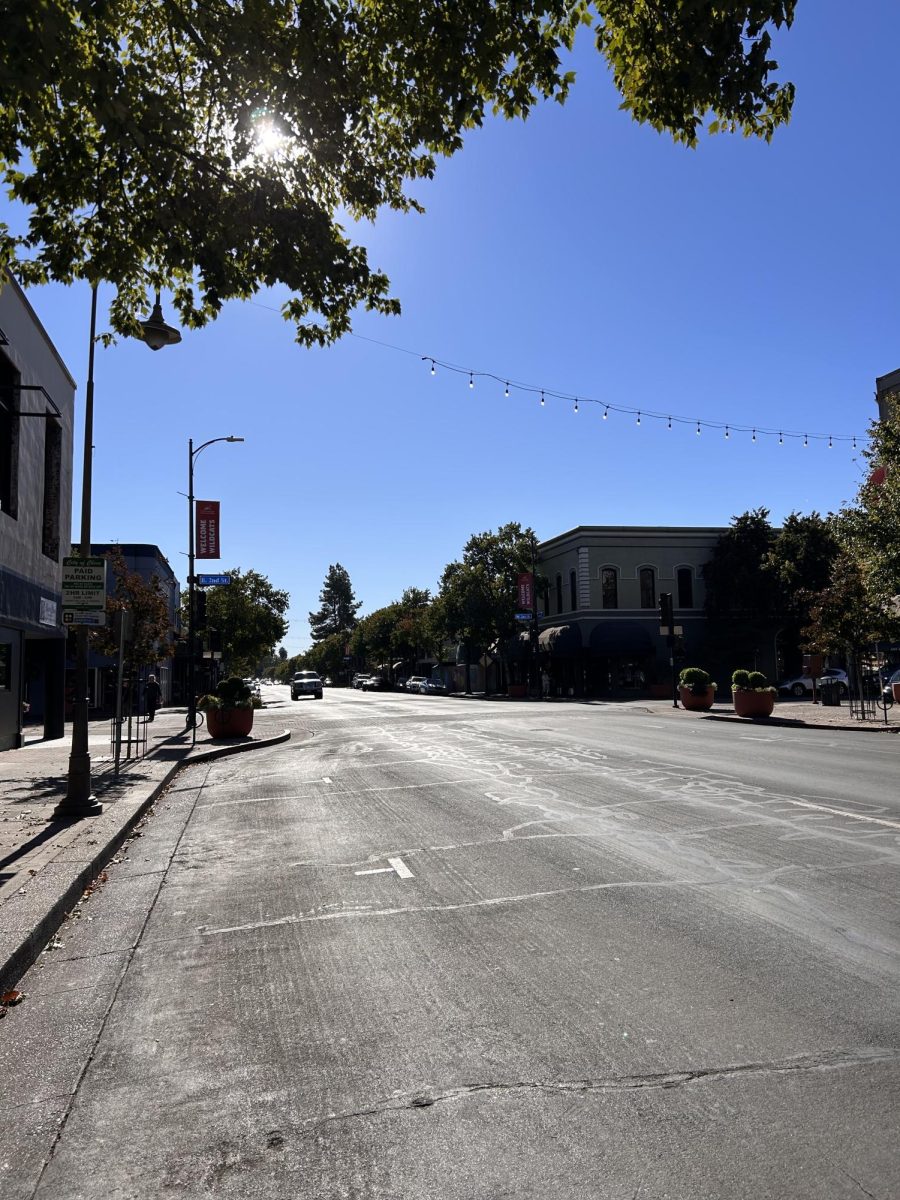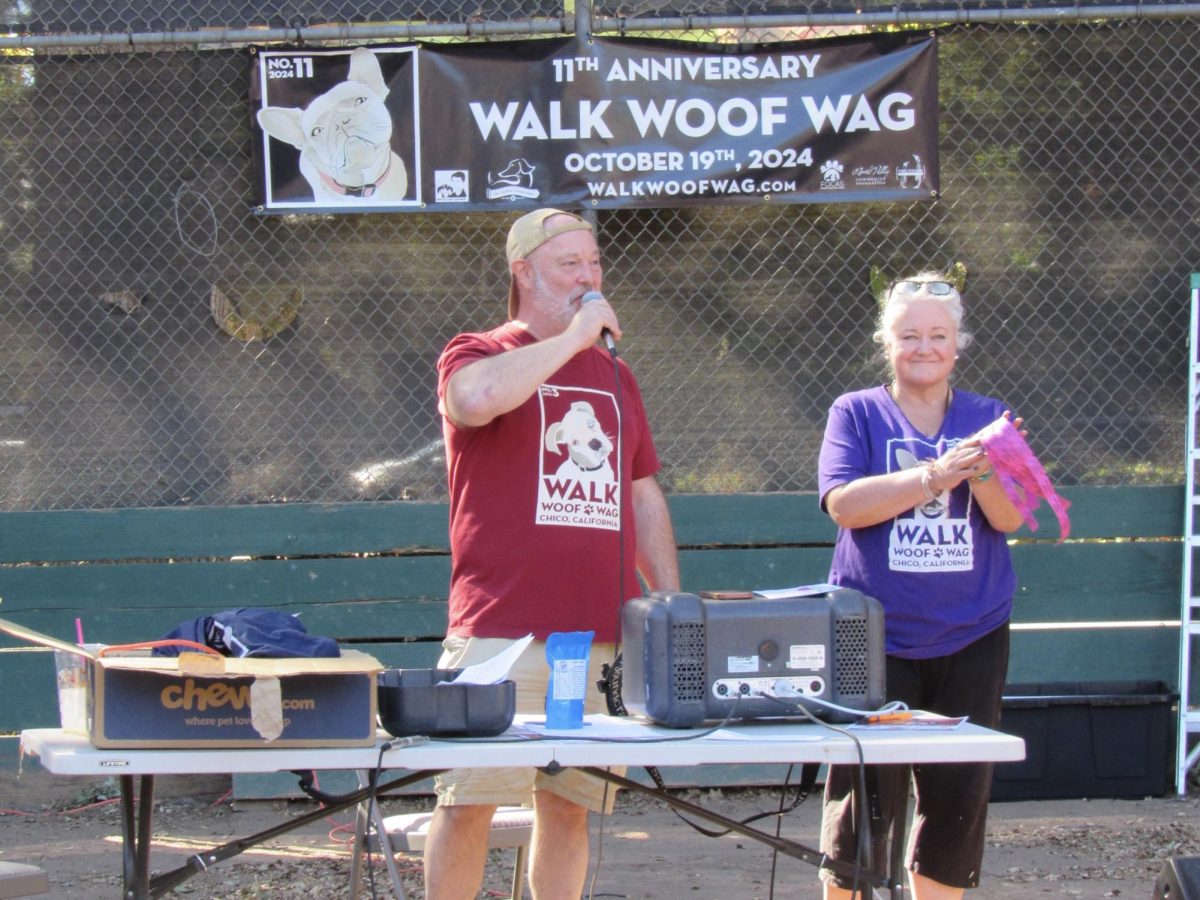It smells a bit like a seventh grade science class doing a frog dissection in the cadaver lab on the second floor of Holt Hall. But on this table is a fraction of a human body, and four Chico State students are huddled around it, working.
Gary Lechner, biological sciences professor, is on deck to keep watch and guide the students when necessary.
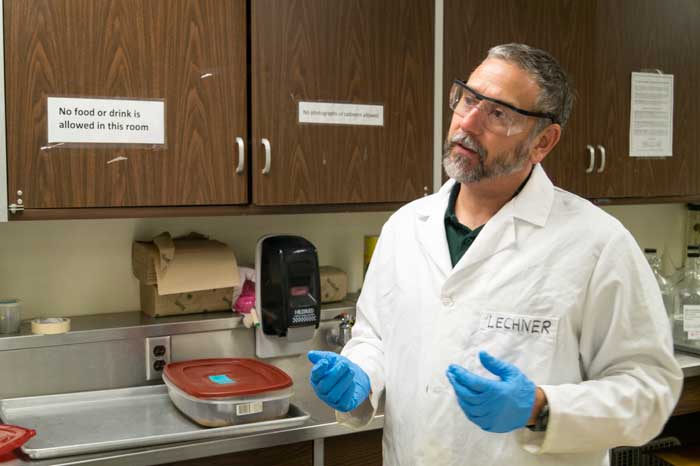
The particular cadaver they are working on is a female. She passed away in her 80s as a result of cardiopulmonary malfunctions. This is the only information the lab receives. Only medically relevant information is disclosed when a cadaver is acquired.
The cadavers are obtained through UC Davis. They cost $2,500 to $3,000.
Chico State has two cadavers it cycles for three years. After that, the cadavers are returned to UC Davis to be cremated.
With 17 to 18 sections of anatomy and biology classes each semester, roughly 780 students work on the cadavers in class.
The body only needs to be wet down with a preservative solution before it can be zipped up and stored in its bag on a gurney for the next batch of students.
Cadavers usually provide interesting surprises when they are dissected, Lechner said. One cadaver in the lab was carrying a handful of gallstones, which the anatomy students stumbled across when they were in the early stages of dissection.
Bodies may have black lungs from a lifetime of smoking or thick arteries from high cholesterol. Each body is unique and shows the students something different.
Anatomical preparation interns are students who do extensive work on the cadavers so other students can observe and study them. This involves a number of tasks, including removing select organs, cutting through muscle and removing fat. Interns will work on the same cadaver for a whole semester.
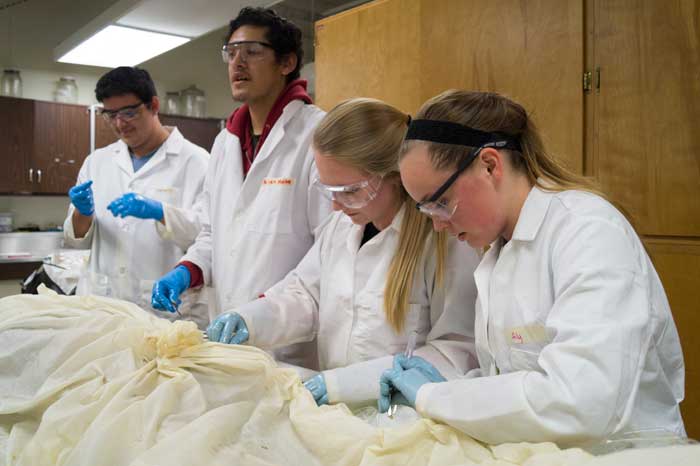
Four interns working away at the cadavers this semester are Alyssa Bowlsby, senior cellular and molecular biology major; Ismael Munoz, sophomore physical therapy major; Alan Mata, junior general microbiology major; and Emmy Hurley, sophomore pre-nursing major. They enjoy working on the cadavers, and they value the experience they are getting.
“I wanted to learn more about the human form,” Mata said. “I was interested in its processes and in having a better understanding.”
Much of the cadaver work requires the removal of fat. When asked if they were ever squeamish about their work, the interns said they are composed and collected as they perform their tasks.
Hurley joked that she got more rattled by a cricket dissection a few weeks earlier than she does by the cadavers.
The interns are fortunate to have this opportunity.
According to Lechner, who also teaches at Butte College, the extent of hands-on cadaver work that Chico State students are able to do is uncommon among most universities.
The experience these interns are getting is invaluable and will no doubt be a strong asset when applying to medical schools down the road.
Lechner and his interns thoroughly enjoy their work, and the group performs its tasks with a tone of excited curiosity.
There is an enormous amount to learn about anatomy, even for the distinguished interns, and their studying is as hands-on as it can get.
In the cadaver lab, your desk is a gurney and your pen is a scalpel.
Nathan Graves can be reached at features [email protected] or @theorion_news on Twitter.




